So having a bucket list to visit the top destinations of Iran? What about off beaten path places in Iran? You can find a lot of less-known destinations in Iran, which fascinated you as much as 22 UNESCO world heritage sites in the country.
From natural wonders to historical attractions, you can find a lot of new destinations in different parts of Iran. You can find breathtaking beauty and rich history in these places.
Although there is a lot of off the beaten path in Iran, here we introduce you with some 15 less-known destinations in Iran. Iran boasts one of the friendliest people in the world. So locals also can guide you to some attractions you cannot find in any guidebook or website.
Read also: Must-See Attractions of Iran You Should Not Miss
Alamut Valley
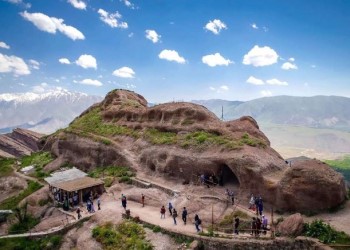
Located in Qazvin, Alamut Valley is one of the most important historical castles in Iran. It is about 200 kilometers from Tehran.
Hassan Sabbah, a champion of the Nizari Ismaili, possessed the castle in 1090.
Stepping up 400 stairs of the castle, you can find its magnificence and beauty.
On top of the castle, you can find the scenic beauty of the Alamut valley.
Due to the hot temperature of the region, the best time to visit this attraction is late spring and early summer.
Off beaten path village in Iran: Palangan
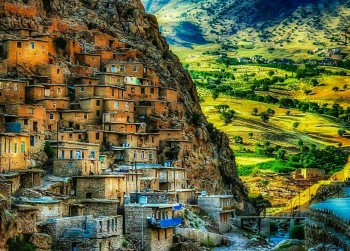
As one of the most beautiful villages of Kordestan Province, Palangan fascinates you with its architecture and nature.
In this stepped village, the roof of one house is the yard of another house.
You can reach the village through Kamyaran, Paveh, Sarvabad, and Sanandaj cities.
The women in traditional clothes are in the village, which is dated back to the Samanid Empire (819–999).
During the first week of the Iranian month of Esfand (late February), the people in Palangan celebrate Kurdish Nowruz. Esfand is the last month of the Iranian calendar. Lighting fire, Kurdish dance, cooking confectionaries, and cookies are parts of rituals.
Read also: Traditional Villages of Iran, An Exotic Experience
Horse-racing competitions in Gonbad-e Kavus
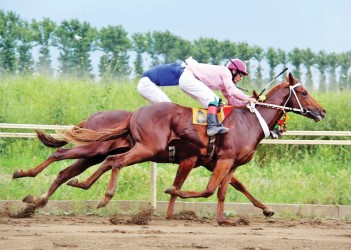
The horse-racing competition in the beautiful city of Gonbad-e Kavus in northern Iran is a less-known destination of Iran. In fact, the city houses Turkmen in Iran, who are renowned for their horse riding.
Every Friday, you can find enthusiasts come to watch the competition.
The life of people in this region is mingled with horse and horse riding.
The competition is held in Gonbad Kavus for years. So if you are interested in horse riding, do not miss this chance to visit the horse-riding competition in this city.
Gonbad-e Kavus also boasts Gonbad-e Qabus, a cylindrical tomb tower with a 61-meter height. It is the grave of Ziyarid ruler Qabus in the 11th century. It is on the UNESCO heritage list.
Off the beaten path in Iran: windmills of Nashtifan

Windmills, known as Asbads, in Persian in Nashtifan in Khorasan Razavi Province is one of the oldest ones in the world. Actually, they were established sometime between 500 to 900 CE.
This magnificent structure in the heart of the desert convert window into other energies.
So, it grinds grains. In this way, people befriended nature for centuries.
These ancient windmills worked with windows up to 74 miles an hour. In fact, the windmills are made from kahgel (clay and straw), and wood. They are up to 20 meter and have a room in which, the grains are pressed and turned into the floor.
Makhunik, the Liliput village
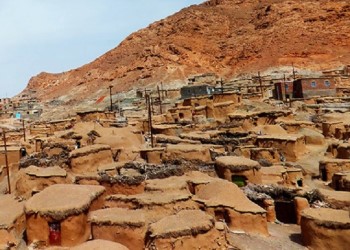
This strange village is in the Southern Khorasan Province in 30 minutes from the Afghanistan border. The locals are originally Afghans.
Its different architecture and mysterious rituals of the people. The village has no path to any place outside. In recent years, a part of the mountain was opened in order to make a road to the village.
It has a traditional structure with clay small houses without any courtyard and windows.
All the houses are built in a hollow. It is known as Liliput in Iran due to its strange buildings and rituals.
They do not know anything about the existence of wheat until 80 years ago and they do not smoke cigarettes, drink tea, or eat meat until 50 years ago.
Off the beaten path fort in Iran: Babak Fort
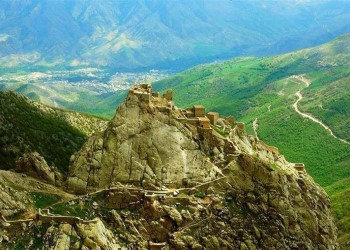
Located in Kaleybar, the fort is a large citadel on the top of a mountain. Babak Fort is in the heart of the marvelous Arasbaran Forest in northwestern Iran, and it is near Tabriz.
So while visiting the fort, you can also enjoy the beauty of this great forest. This forest is the biosphere reserves of Iran on the UNESCO list.
But what about Babak Fort? The fort is dated back to the Sassanid era (224–651).
However, it is named after Babak Khorramdin (795/798 – 838) was one of the main Iranian who rebelled against Arabs. He and his followers fought against Arabs for 22 years from this fort.
The Babak Fort,2300 meters above sea level, is located in southwestern Kaleybar. Valleys surround the fort, and there is only a narrow track to reach the place.
Toghrol Tower
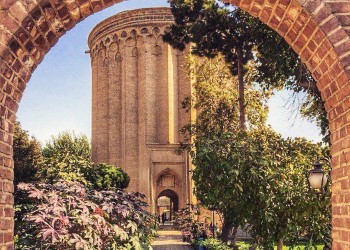
Ray, the oldest existing city in Tehran Province, has a lot of historical monuments. One of them is Toghrol Tower.
The 20-meter tower is in fact the tomb of Seljuk ruler Toghrol Beg, who died in 1063 in Ray. It is a conical dome with walls that have a thickness of about 2 to 3 meters.
In fact, it is not a simple tomb tower. It was once a travelers’ guide, and also sundial.
It means that the play of light and shadow shows 24 hours in vertical angles around it. Besides, there are stalactites on the top of these angles. It also can echo the sounds. Since it was once the place for important speeches.

Kal Jenni Canyon
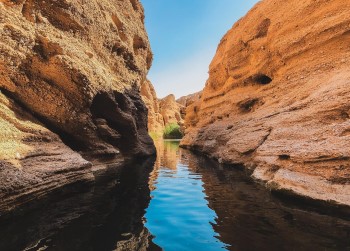
This mysterious canyon is located in Southern Khorasan Province near Tabas city.
In fact, it is formed by erosion throughout history.
However, the name means ‘canal of jinn’ in Persian. This is because locals believe that it is a mysterious place.
Going into the valley, there are several holes in the mountain.
These manmade holes are corridors with some rooms. Experts believe that they go back to the Sassanid era (224–651).
Read also: Find Some Natural World Wonders in Iran
Khaled Nabi cemetery

Located in the northeastern of Golestan Province, Khaled Nabi cemetery is near the Iran-Turkmenistan border.
The cemetery is one kilometer from the Khaled Nabi mausoleum, a pre-Islamic prophet.
The cemetery is composed of 600 standing stones. Khaled Nabi dates back to the Paleolithic period. Ther are different types of gravestones.
One is a cylindrical column with a cap-like top between 60 to 200 cm.
The archeologists believe they belong to men. Some others have rectangular sections and two opposed lobes, probably for females.
Off the beaten path city in Iran: Varzaneh
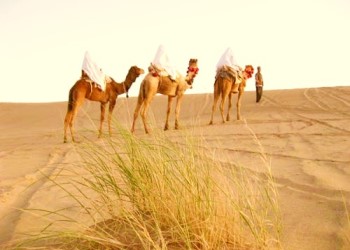
The city of Varzaneh is on the border of Isfahan and Yazd provinces.
The city has two sections, new and old. There are different handicraft workshops and historical monuments.
Mirmiran House, Safavid ab anbars (water reservoirs), and anthropology museum are some of the places you can visit in Varzaneh.
Unlike other parts of Iran, the women wear white chadors.
The Varzaneh desert is near the city. The different sizes of dunes create great scenes and have a great experience there.


1 Comment
Great destinations! Thank you